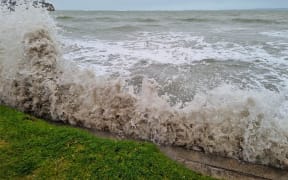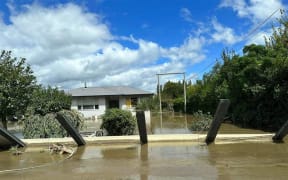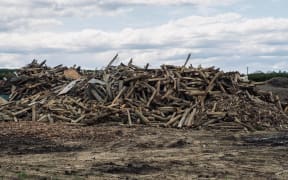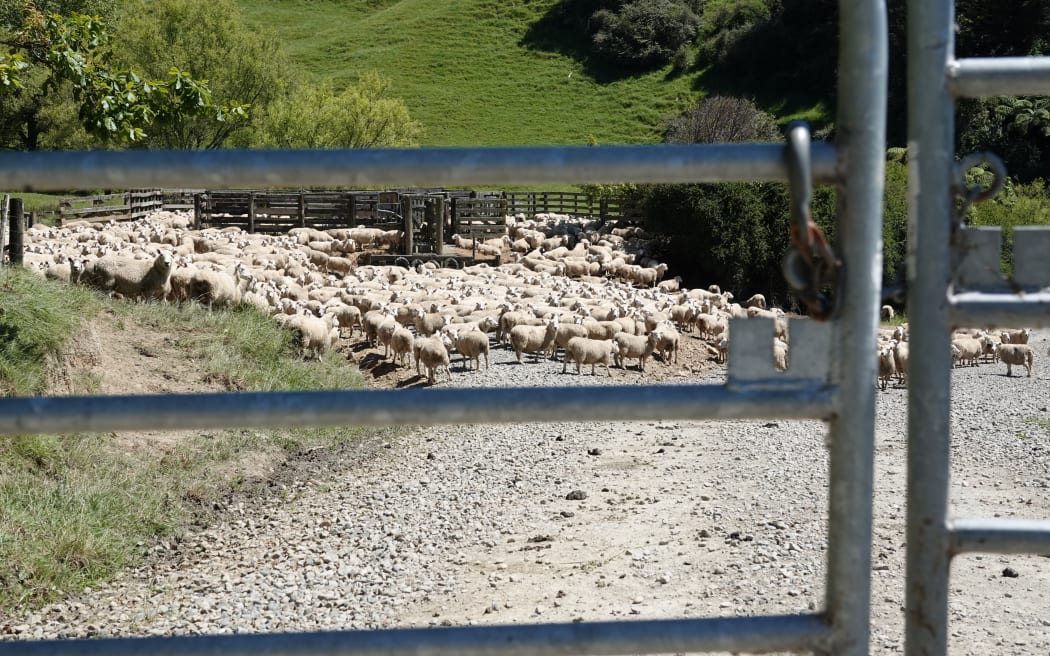
Sheep at Puketiti Station bask on a rare sunny day. Photo: RNZ / Jimmy Ellingham
Ten months after Cyclone Gabrielle, bad weather has left the recovery for many East Coast and Tairāwhiti farmers stuck in the mud.
And while there is hope forecast dry weather will arrive soon, a return to normal could be years away.
The sprawling Puketiti Station, near Te Puia Springs on the East Coast, has endured a hell of a year.
"This year we've measured four and a half metres of rain here on the Puketiti Hill," owner Dan Russell said.
"Our usual rainfall is around 1700 millimetres to 2m, so over double. Most of that's fallen last summer, or this spring.
"It's just incredibly wet."
This had made everything harder at the 3000-hectare operation, he said.
"There's a lot of slips and scarring, certainly not as bad as the Esk Valley or places. We lost reasonably large hillsides going down the gullies, a lot of fencing, a lot of tracks, a lot of culverts,
a lot of floodgates, just a lot of infrastructure.
"The sheep yards, the woodsheds have all moved and need to be rebuilt."
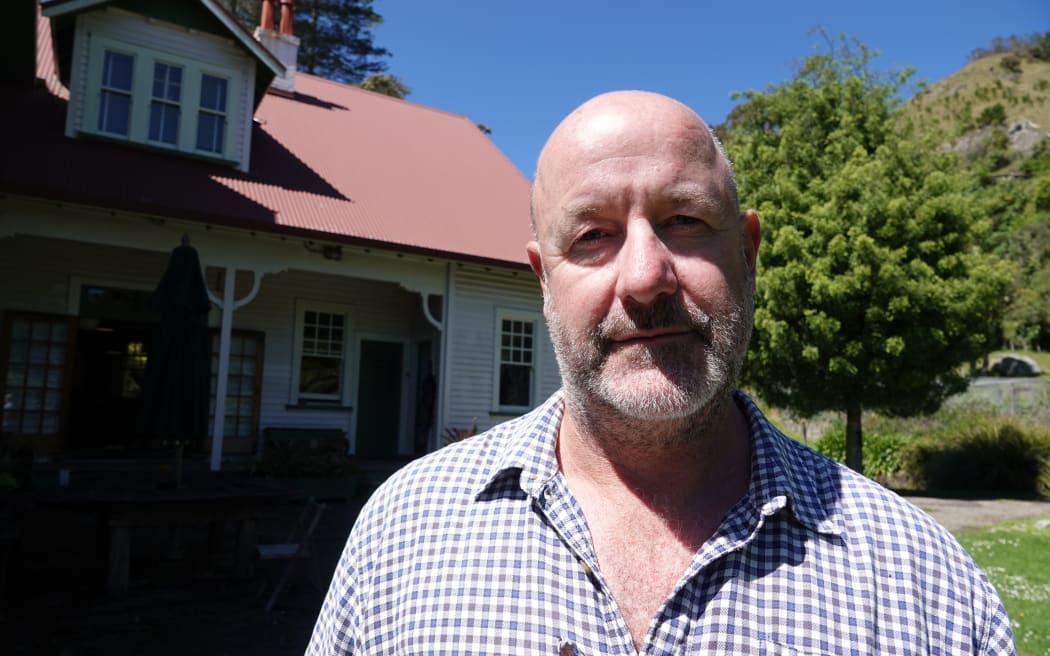
Dan Russell says it could cost more than $1 million to repair damage from Cyclone Gabrielle on Puketiti Station. Photo: RNZ / Jimmy Ellingham
Dams were silted too, after the wettest period Russell had seen in 20 years at Puketiti.
"It's going to be a three-to-four year recovery, $1 million - $1.5m, probably. We're prepared for that. We start at the boundary and make the place watertight, and work our way back in, prioritising as we go."
Damage on the roads leading to the station was still under repair.
"Straight away after Cyclone Gabrielle we were completely cut off for six weeks. No one could get in. No one could get out.
"We were getting fuel heli lifted in. Food was being flown in. Luckily, all the boys here are on the horses and so there were packing in stores to get them through. It's not a long ride to Te Puia, where they could get supplies and then come back out here.
"We've got a solar system up here at the homestead, so everybody just came up here for meals and had showers - marae styles. The novelty of the adventure soon wore off."
Russell was in Tokomaru Bay recovering from a back operation when Gabrielle struck, but soon saw the damage from a helicopter.
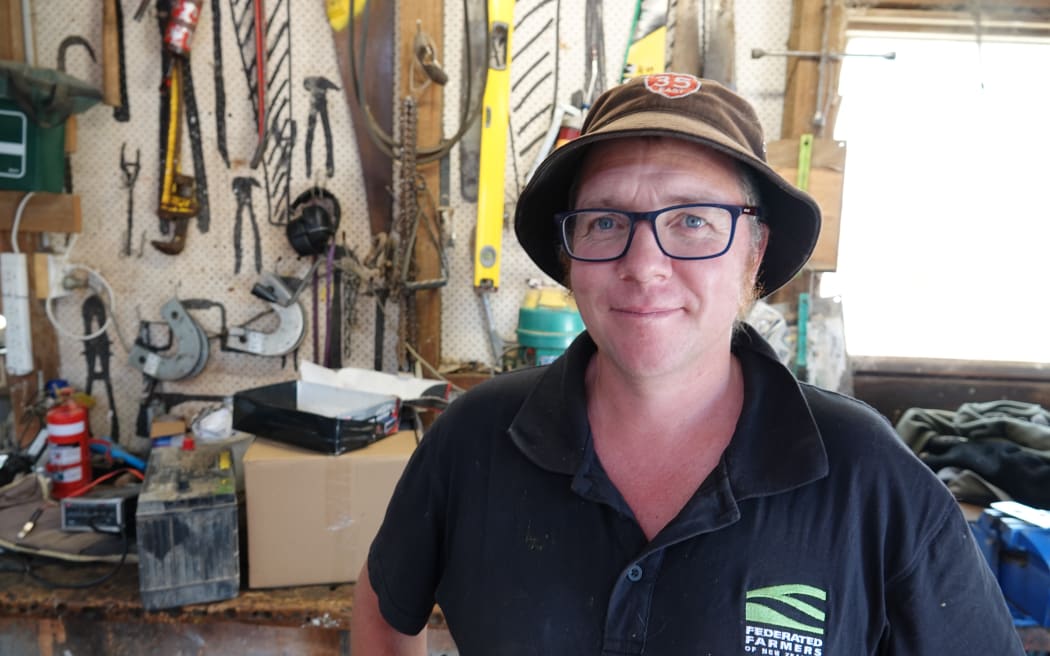
Toby Williams says farmers in the East Coast-Tairāwhiti region need a break after a wet year. Photo: RNZ / Jimmy Ellingham
Between Gisborne and Tolaga Bay, Federated Farmers meat and wool chairperson Toby Williams farms Pihitia Station.
He said it fared okay during Gabrielle, but the constant storms of the past two years had taken a toll.
"No repairs have been done. We had a [bull]dozer out a month ago trying to put a new fenceline on the boundary. He went out there and went, 'Nah, it's too wet,' turned around and came back again. Did half of what he needed to do.
"We're lucky he didn't go and do the fenceline because we had another 300-400mm of rain the other day and the hillside just carried on [slipping].
"It's just unrelenting."
Farmers were looking forward to the dry period forecast under El Niño, he said.
"We need Santa to bring a big sack of sunshine. Gisborne used to be the sunshine capital of New Zealand.
"I think we're 400-500 hours behind our average this year. You do the maths on that... 50 days behind on sunshine."
Williams said farmers in the district were warn out.
"It would be as bad as we've ever seen it.
"We've got good rainfall records going back 70-80 years. There's just nothing like it. A wet year used to be 1400-1500mm of rain. We're going over 2m. And right behind us they've had 3.5m.
"It's Fiordland-style rain, but on the East Coast."
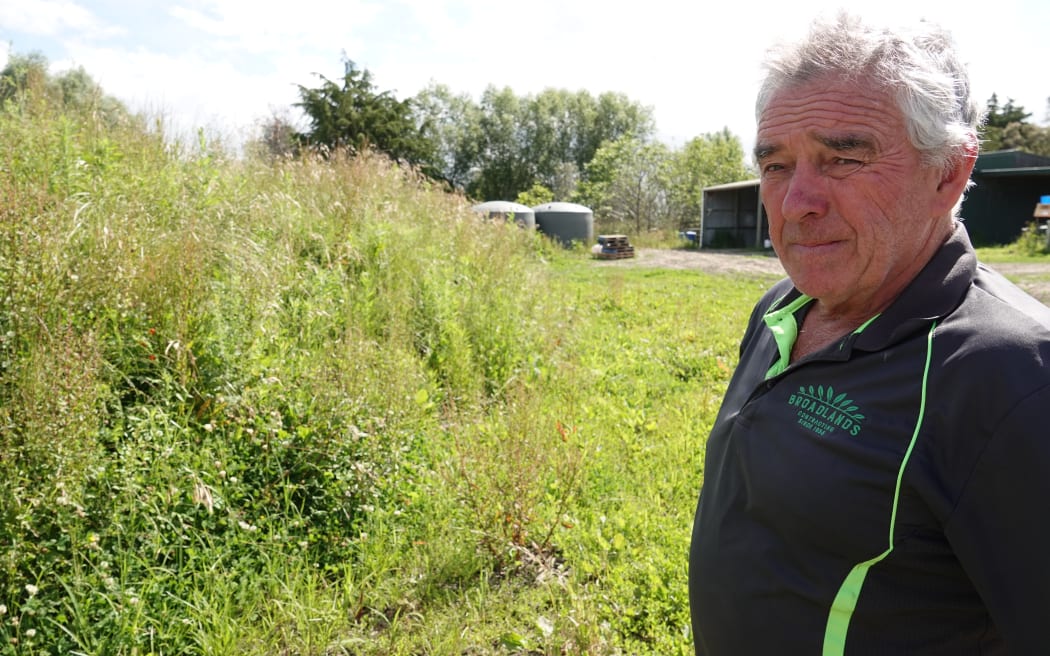
Mike Parker's property is covered in piles of silt. Photo: RNZ / Jimmy Ellingham
The past few years have been rough for Mike and Bridget Parker, who farm near Tolaga Bay, thanks to slash brought in by floods of the neighbouring Mangatokerau River.
"We had Cyclone Hale on 10 January. We had a bit of devastation - water everywhere, and through the back of the house, logs around the place.
"A month later we had the big one - Gabrielle, which was quite a lot higher and a lot more violent and harder. Big damage there.
"The crops were knocked around badly."
Cyclone Gabrielle also brought silt, which Parker said was rubbishy and full of weeds.
"It's been a bit of a battle with the silt depth and crops are not doing all that well. We're having to add the likes of zinc to help with deficiencies, and extra fertiliser," he said.
"It's covered our whole farm - with our group we farm just under 300ha. And it's anything from half a metre deep down to maybe 200mm, maybe in the odd place it's even less."
The Parkers received some funding for silt removal, but it only made a dent, and piles and piles of it remain.
"It's a jungle. It's just big windrows of silt and it's got weeds and rubbish all over it now."
Parker said they could smooth it off and try to grow grass, although that would prove difficult and costly, with the need to pull down fences.
The Parkers have been outspoken about the effects of slash in the district and Mike Parker said the problem was affecting fisheries as well as farmers.
"It's unsatisfactory because this is the tourism time for us. Our population can go up to 5000 in Tolaga Bay from a resident population of 1600.
"It's good for the shops because winter can get quiet, so that's all been knocked on the head. It's almost dangerous going for a swim at the beach now."
